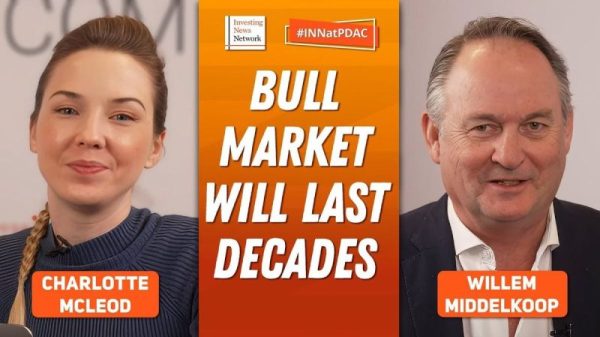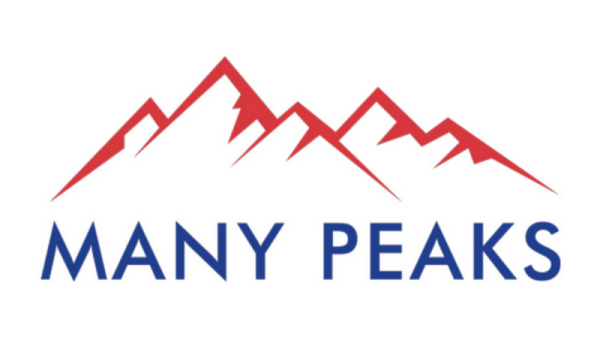The pharmaceutical industry is a major player in the life science sector, responsible for developing and manufacturing the majority of prescription drugs.
Companies in this sector are constantly researching and creating innovative treatments for various medical conditions, including immuno-oncology, neurology and rare diseases. In recent years, there has been a particular focus on developing new treatments for diabetes, weight loss and cancer.
With the pharmaceutical sector projected to reach a staggering US$1.6 trillion in total revenue by 2028, there is an opportunity for investors to gain exposure to the growth potential of this industry while also benefiting from the diversification and stability provided by established companies.
1. Eli Lilly and Company (NYSE:LLY)
Market cap: US$670.4 billion
Founded in 1876, Eli Lilly and Company employs approximately 10,000 individuals for research and development in seven countries and has products marketed in 110 countries, including therapies for diabetes, cancer, immune system diseases and a wide range of mental health conditions. The company also has drugs in development for various medical conditions, such as skin ailments, cancers, Crohn’s disease, diabetes, obesity and Alzheimer’s disease.
On February 6, Eli Lilly released its financial results for 2023’s fourth quarter, revealing that its new products revenue grew to a total of US$2.49 billion. This increase was led by Mounjaro and Zepbound, two drugs that can help manage diabetes by mimicking hormones to help regulate appetite and insulin sensitivity.
The results also show an increase in growth products revenue, which rose 9 percent to hit US$5.27 billion in Q4. The leading drugs were Verzenio, a treatment for breast cancer, and Jardiance, another diabetes medication.
2. Novo Nordisk (NYSE:NVO)
Market cap: US$522.4 billion
Novo Nordisk has demonstrated a commitment to addressing various health conditions, such as type I and II diabetes, obesity, hemophilia and growth disorders by marketing therapies in 170 countries.
In addition to innovative drug treatments, the company has developed an app-supported, less invasive way for diabetics to monitor and record their insulin levels with the NovoPen6 and NovoPen Echo Plus. Novo Nordisk also has a partnership with Microsoft (NYSE:MSFT) through which it is using the tech giant’s artificial intelligence, cloud and computational services for the discovery and development of new drugs and treatments.
On January 30, the company released its 2023 financial report, which shows that sales from its North American operations rose by 54 percent (at a constant exchange rate) year-on-year. Sales for diabetes and obesity care led the way.
On February 5, Novo announced plans to acquire three fill-finish sites from a subsidiary of Novo Holdings. The move is connected to Novo Holdings’ agreement to acquire Catalent. According to a press release from the company, ‘The acquisition of the filling sites is aligned with Novo Nordisk’s strategy of reaching more people living with diabetes and obesity with current and future treatments. It enables an expansion of the manufacturing capacity at scale and speed while providing future optionality and flexibility for Novo Nordisk’s existing supply network.’
3. Johnson & Johnson (NYSE:JNJ)
Market cap: US$375.05 billion
Johnson & Johnson operates on a massive scale and encompasses various segments through its subsidiaries. Its primary pharmaceutical subsidiary is Janssen Pharmaceuticals, which focuses on cardiovascular disease and metabolism, infectious diseases and vaccines, neuroscience, oncology, immunology and pulmonary hypertension.
On January 30, the company submitted DARZALEX FASPRO, its treatment for multiple myeloma, to the US Food and Drug Administration for approval following positive data from a Phase III study. DARZALEX FASPRO is a treatment for newly diagnosed multiple myeloma in patients who are eligible to receive a transplant.
Johnson & Johnson’s 2023 financial results, released on January 23, indicate that its sales rose 6.5 percent compared to 2022, reaching US$85.2 billion, driven by therapies in oncology, immunology and neuroscience.
4. Merck & Company (NYSE:MRK)
Market cap: US$319.74 billion
Merck & Company has an extensive portfolio of products and a promising pipeline of potential therapies in various stages of development. The company’s product line and pipeline include treatments for conditions such as diabetes, cancer and animal health, with a focus on therapies for hospitals and vaccines.
Currently, Merck has a robust research and development pipeline, with over 80 programs in Phase II trials, over 30 in Phase III trials and at least eight under review. The company is actively pursuing treatments for a range of conditions, including HIV, HPV, ebola, hepatitis C, cardio-metabolic disease and antibiotic-resistant infections.
Merck’s 2023 financial results reveal that in Q4 the company increased its worldwide sales by 6 percent year-on-year to US$14.6 billion, bringing its total worldwide sales for 2023 to US$60.1 billion, up 1 percent from 2022.
5. AbbVie (NYSE:ABBV)
Market cap: US$302.37 billion
AbbVie is a global biopharmaceutical company that discovers and delivers innovative medicines and solutions to address complex health issues. The company has identified five areas of focus where it believes it can make a significant impact in improving treatments for patients: immunology, oncology, neuroscience, eye care and aesthetics. One of its top-selling performers was Humira, a therapy for autoimmune conditions such as rheumatoid arthritis and Crohn’s disease. However, the patent expired in 2018, and the first biosimilar hit the market in early 2023.
AbbVie’s financial results for 2023 show that its full-year net revenues came in at US$54.32 billion, down 6.4 percent on a reported basis. Meanwhile, full-year global net revenues for its immunology portfolio were US$26.14 billion, a decline of 9.6 percent on a reported basis due to Humira biosimilar competition. Despite these setbacks, the company said it remains dedicated to improving patient outcomes and driving innovation in the healthcare industry.
FAQs for pharmaceutical stocks
What does the pharmaceutical industry do?
The pharmaceutical industry encompasses a variety of companies that have different — although sometimes overlapping — roles to play. The most famous players are the big pharma companies. These giants often have a variety of subsidiaries, large pipelines and many products in their portfolios. There are also smaller pharma R&D companies, which sometimes get acquired by larger firms if their work seems promising. Companies in these categories research, develop and sometimes bring to market drugs aimed at filling unmet needs, such as products to treat conditions that are currently untreatable or to help people who are resistant to pre-existing treatment options.
Once patents run out on prescription drugs, generic drug manufacturers create much cheaper generic versions. Wholesale companies also play a large role in the pharma sector. According to Common Wealth Fund, wholesalers have four areas through which they affect the buying and distribution of drugs: ‘setting generic drug prices, leveraging list price increases, competing in specialty drug distribution, and mitigating or exacerbating drug shortages.’
What is the big pharma business model?
Big pharma companies have a fairly consistent business model. Often, the company’s R&D team will slowly develop a new drug through many stages of testing to prove the drug’s efficacy, safety and necessity.
If all trials are completed successfully, the company will apply to government organizations such as the FDA, which must approve the drug before it can be mass produced, marketed and sold. Companies can skip a number of these steps by acquiring smaller companies, or through in-licensing, which results in two companies sharing the burden of a drug’s development through to commercialization. However, it’s worth noting that large pharma companies have many drugs in their pipelines at any given time, and many don’t make it to approval.
Once a drug is approved by the relevant health organization, it can then be marketed and prescribed. Because patents expire after 20 years, companies lobby and advertise to try to get as many sales as possible during that window.
Who are the ‘Big 3’ in pharma?
The ‘Big 3’ in pharma refers to the three largest wholesalers: AmerisourceBergen (NYSE:ABC), Cardinal Health (NYSE:CAH) and McKesson (NYSE:MCK). Collectively, those three companies account for over 92 percent of wholesale prescription drug distribution in the US.
Which country is number one in the pharma industry?
The US is the top pharmaceutical country, with five of the top 10 pharma companies by revenue headquartered in the nation, including the top three of Pfizer (NYSE:PFE), AbbVie and Johnson & Johnson. The country is also in the lead when it comes to consumer spending on pharmaceuticals due to the high cost of brand-name drugs.
The US is also the top country globally for R&D spending — companies that are part of PhRMA, a trade group that represents US biopharmaceutical companies, spent US$100.84 billion on R&D in 2022 out of a total of US$244 billion spent by pharmaceutical companies globally that year.
What are the problems in the pharmaceutical industry?
One of the largest problems with the pharmaceutical industry, particularly in the US, is the high cost of treatments. According to a study looking at American prescription drug spending between 2016 and 2021, prescription drug prices were 2.5 times the cost on average of prices in similar high-income nations.
An example that has been at the center of discourse in recent years is insulin, which can cost Americans with type 1 diabetes over US$1,000 per month. In early 2023, US President Joe Biden signed the Inflation Reduction Act into law, and it includes a cap of US$35 per month on insulin for seniors on Medicare, although it does not help people who are uninsured or have private health insurance. Eli Lilly has now instituted that same price cap for all users of their insulin, and there is push for further legislation.
However, while progress in insulin pricing is happening, it’s far from the only medication with high costs. According to the aforementioned study, the top 10 percent most expensive drugs account for less than 1 percent of all prescriptions, but make up 15 percent of all retail prescription spending.
While generic versions of medications are relatively cheap, they can’t be created until patent protection for the brand name version expires, which is usually 20 years after filing for the patent.
What is the future of pharmaceuticals?
Pharmaceutical companies will have to adapt to changing times moving forward. The world is shifting, with economic woes, geopolitical disruptions and supply chain concerns affecting nearly every sector. Innovation continues to accelerate as well, and the medical landscape has changed in the wake of COVID-19. Additionally, the US government is making moves to address the astronomical prices of prescription medicine as the industry comes under increasing scrutiny.
For a look at what is else is effecting the market in 2023, read our 2023 Pharma Market Forecast.
Are pharmaceutical stocks risky?
While established players like the big pharma and wholesale companies discussed above should be relatively consistent, small companies are make-or-break depending on whether their drugs are successful. This means that investors could see much higher returns compared to large companies, but run the risk of taking massive losses in the case of failure.
Securities Disclosure: I, Meagen Seatter, hold no direct investment interest in any company mentioned in this article.







































